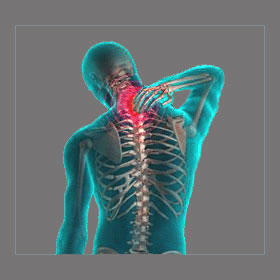
Suffering spinal stenosis from car accident can occur due to direct and indirect consequences of trauma to the spine. Since spinal stenosis can occur due to many possible reasons, it should be no surprise that motor vehicle accidents can cause and contribute to stenosis due to a variety of case-specific circumstances.
Car accidents are major direct causes of back and neck pain. Additionally, their collateral effects over time can also increase the likelihood of suffering pain due to advanced spinal deterioration which may occur due to the anatomical changes brought about by the original trauma. Therefore, when discussing spinal stenosis and car accidents, one must account for primary causations of canal narrowing, as well as secondary changes to the spinal canal that may occur over time.
This discussion focuses on the relationship between car accidents and spinal stenosis. We will investigate how motor vehicle collisions are at least partially to blame for many cases of symptomatic stenosis.
Primary Spinal Stenosis from Car Accident
Primary stenosis is defined as central canal narrowing that occurs acutely as a direct result of a car crash. These occurrences may necessitate emergency surgical intervention when the spinal cord or spinal nerves are compressed due to sudden and significant trauma. Acute stenosis presentations may occur for several possible reasons, including all of the following factors detailed below:
Car crashes can incite acute herniated discs, as well as intervertebral rupture. These circumstances can produce sudden canal impingement issues which might be viewed as medical emergencies when they threaten neurological tissues.
Vertebral fracture often causes bone fragments to enter and possibly narrow the spinal canal. Multiple or large fragments can be direct sources of central spinal stenosis and are usually dealt with surgically.
Vertebral dislocation can cause spinal stenosis due to canal misalignment. Likewise, trauma induced spondylolisthesis can also misalign the central canal and result in nerve impingement.
Occasionally, massive trauma can cause inflammation and muscular damage that might actually reshape the spine temporarily. Results can include changes in lordosis, kyphosis and even scoliotic changes that may misalign the spinal canal and influence nerve functionality.
Secondary Spinal Stenosis from MVA
The long-term effects of trauma on the body are still controversial, but most doctors agree that serious crashes can produce permanent consequences on form and function of the spine. Some of the changes may contribute to premature and/or more substantial spinal stenosis than would otherwise be expected to occur in a given individual.
Changes to vertebral bones, intervertebral discs, spinal joints, spinal ligaments and spinal nerve tissues can all contribute to symptoms which may occur at some point after the trauma. These changes might be minor or major and can influence the development of stenosis from weeks to decades after the original accident took place.
Treating Spinal Stenosis from Car Accident
Acute stenosis presentations might threaten the viability of the spinal cord or spinal nerves. When this occurs, the situation is usually deemed to be a medical emergency and is often treated with immediate spinal surgery to restore patency to the central canal space. Laminectomy, spinal fusion and corpectomy are all typical solutions for acute emergency stenosis presentations. Less severe presentations of acute stenosis might be monitored and possibly treated surgically at some point in the future if the condition worsens or becomes disabling.
Less severe and secondary cases of stenosis might be treated conservatively, using a variety of methods detailed in our spinal stenosis treatment resource section. Of course patients should know that in virtually all cases (except for disc-enacted transient stenosis), conservative care will not provide a cure and only surgical intervention can actually resolve stenosis. However, since surgery does demonstrate many risks, symptomatic care might still be the best path of therapy for particular patients.
It must be noted that a severe trauma, such as a car accident, is often the ideal trigger for a psychosomatic pain syndrome to begin. This can occur acutely or as a secondary result of the accident and might be the actual origin of symptoms in many patients. This possibility should always be investigated and treated before moving forward with any form of surgical intervention for structural stenosis.
Spinal Stenosis > Causes of Spinal Stenosis > Spinal Stenosis from a Car Accident





